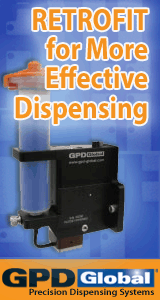| I'm trying to put together a set of design guides for use for new designers | in house or to be sent out for contracted layout work. I would like to start with a top ten list of things that will go wrong if rules aren't available. For example testpoints on the schematic shouldn't be an afterthought or layer stackup definitions. If anyone has one or two issues that come back to bite you on layout please drop me line. I have worked extensively developing design standards and acceptance specifications for the printed circuit industry. Some of the stuff included is from IPC as derived from folks like me over the years. The following provides but a glimpse of what is required for master drawing notes, design rules, and acceptance criteria applying to effective DFM/CE requirements: I hope it is of some value.
Thought I�d throw this out as a minimum set of considerations for DFM and design review. There are others, but who among us has time or space? I do.
Note: It shall be required that design reviews be based upon design compatibility with statistically characterized processes. Customers and suppliers not meeting qualification standards, for this requirement, shall not be present, or take part in design review processes. The following check list shall be used to review preliminary design requirements for the design process:
MASTER AND ASSEMBLY DRAWINGS Master and Assembly drawings shall be prepared in accordance with requirements in these standards. Drawings shall contain, at a minimum, all the following information, whether on single or multiple sheets: All printed circuit fabrication parameters (Notes, Dimensions, Tolerances, And Datums) Hole Requirements (Dimensions, Tolerances, Location) Pad Requirements (Dimensions, Tolerances, Location) Hole To Pad Relationships as above plus aspect ratios with minimum plating and ductility requirements. Material and Constructions for SMT, Impedance Controlled, Multilayer Printed Circuitry Plating/Metallization Requirements (Copper, Tin Lead, Gold, Etc. -- Electroless And Electrodeposited) Stencil Requirements Fiducial Targets For SMD Placement Quality Conformance Test Circuitry Solder Mask Requirements Artwork Requirements Features, Feature Locations, Type, Size, Shape, Panel Requirements, And All Other Printed Circuit Fabrication And Assembly Requirements. Marking Requirements Component Location And Orientation Requirements Engineering Change Notices Concurrent Contract Review Requirements Check List For Manufacturing 1) CONTRACT REQUIREMENTS Bill of Materials Master And Assembly Drawings Acceptance Specifications And Test Methods Assembly Identification Documentation Listing And Control Requirements Business Issues (Price, Delivery, Quality) 2) TEST REQUIREMENTS Listing Of Test Equipment Needed Device Functional Description Theory Of Operation Set Of Schematics In-Circuit Wave Form And Voltage Specifications Input/Output Requirements and Specifications Tolerances (Test Measurement And Equipment Calibration) Safety Requirements Functions To Be Tested Quantity Of Testable Nodes Programmable Device Information Packaging And Shipment Requirements Marking Requirements Quality System Requirements Burn-In/Environmental Stress Screening (ESS) Temperature Extremes Temperature Rates of Change Humidity Extremes Humidity Rates Of Change Burn-In/Test Duration EMI/RFI Requirements Vibration--Displacement and Frequency Shock Altitude Extremes Altitude Rate Of Change Power Requirements Constant Or Variable Rate of Change Test Requirements At All Levels Design Standards And Acceptance Specifications Models Or Illustrations Quantity And Delivery Requirements Other Relevant Business Practices For Assembly Services Assembly Check List/Statement Of Work Engineering Modifications At Design Level (preferred) - Corrections As Required (ECNs) Areas Requiring Special Lead Protrusion Dimensions Component Height Criteria Exceptions To Design Rules, Acceptance Criteria, Or Process Capabilities Conformal Coating Requirements Special Cleaning Requirements Flux Considerations And Limitations Special Soldering Requirements Wire Routing Requirements Methods Of Sterilization 6.11.4.2 Design Review Requirements For Manufacturing Using The Foregoing Phase One -- Schematic/parts Level 1) Schematic Review By E.E. And Board Designer 2) Schematic Legibility and Traceability 3) Component Requirements Complete 4) Circuit Polarities Correct 5) I/O Function List Complete 6) Parts List Review Complete 7) Parts List Concurrently Reviewed By EE, ME, MM, QA, ETC. 8) Parts List Conformance To Schematic 9) Part Numbers Contractually Accurate 10) Data Sheets Included/Accurate/Current 11) Gate List Conformance 12) Component Selection - Based Upon Availability, Performance, Solderability, Design Effectiveness, And Production Considerations. 13) Spacing, And Space Requirements. 14) Electrical Performance. 15) Thermal Considerations (Assembly And Performance). 16) Test, And Testability Requirements. 17) Producibility, Yield, and Reliability Considerations. 18) Supplier, And Production Capabilities. 19) Industry, And Company Standards. 20) Schedule Requirements. 21) Auto Route Considerations Including Levels Of Design Compromise. Phase Two -- Prototype Level 1) Requirements For All The Above. 2) Requirements For Effective PCB Fabrication. 3) Requirements For Effective PCB Assembly Operations. 4) Requirements For Effective Test And Modifications. Phase Three -- Production Level 1) Requirements For All The Above. 2) Adherence To Design Standards For Producibility. Consideration For Statistical Process And Quality Control. Happy designing, Earl Moon
reply »
![]()
![]() I'm trying to put together a set of design guides for use ...
- Jul 22, 1998
by
I'm trying to put together a set of design guides for use ...
- Jul 22, 1998
by
![]()
![]() | I'm trying to put together a set of design guides for us...
- Jul 22, 1998
by
| I'm trying to put together a set of design guides for us...
- Jul 22, 1998
by







